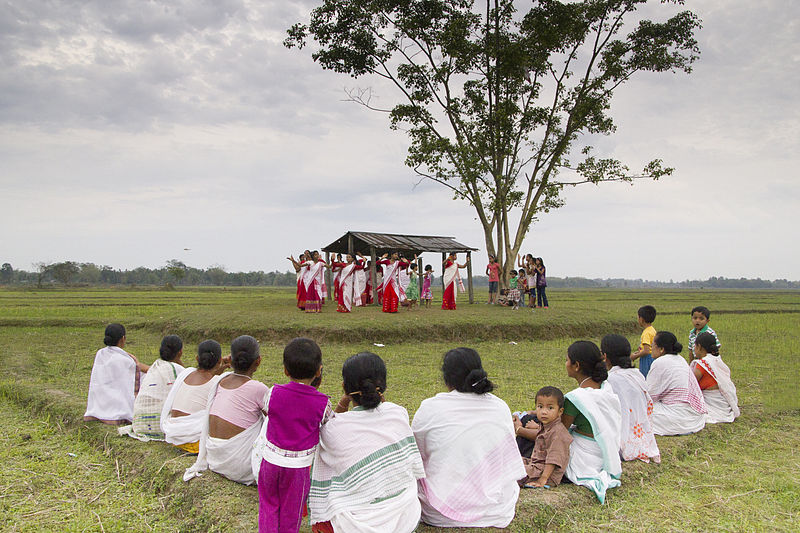জেং তাঁৰজেংৰাইমুখ
জেং বিহু (Assamese) [ Roman: jeng bi.hu]
Contributed by: Himjyoti Talukdar on 2009-04-21
 Assamese: জেং বিহু
Assamese: জেং বিহু
জেং বিহু (Assamese) [ Roman: jeng bi.hu]
Contributed by: Himjyoti Talukdar on 2009-04-21
1. (Proper Noun-Common) The tradition of performing ‘Jing Bihu, Gabharu Bihu by Ahom maids has still been going in some places of upper Assam. This practice of unmarried girls coming out in the evening during spring time to sing and dance wishing fertility to the land itself is a proof of woman of this community enjoying enough freedom than that enjoyed by the caste Hindu women who were never allowed to join such performances outside home. These girls also used to play musical instrument like ‘Taka , Gagana , sutuli’ etc. while dancing and singing at that time. আহোমৰ দিনৰে পৰা চলি অহা ’জেং বিহু’ এতিয়াও উজনি অসমৰ কিছুমান ঠাইত প্রচলিত ।এই প্রথা মতে অবিবাহিত যুৱতী সকলে বসন্ত ঋতুত /ৰঙালী বিহুত জাক-পাতি গছৰতলত ধৰিত্ৰীৰ উৰ্বৰতা কামনা কৰি আবেলি সময়্ত নৃত্য গীতৰ অনুষ্ঠান কৰে ।এই কথাই প্রমাণ কৰে এই গোষ্ঠীৰ মহিলা সকলৰ, সেই সময়ত মহিলা হিচাবে স্বাধীনতা কিমান আছিল, যি সময়ত হিন্দু মহিলাৰ ঘৰৰ বাহিৰত নৃত্য গীত কৰাত কঠোৰ বাধা নিষেধ আছিল ।এই মহিলা সকলে নৃত্য গীতৰ সময়ত বিভিন্ন বাদ্যযন্ত্ৰ যেনে ’টকা’, ’গগণা’, ’সুতুলি’ আদিও ব্যৱহাৰ কৰে ৷

